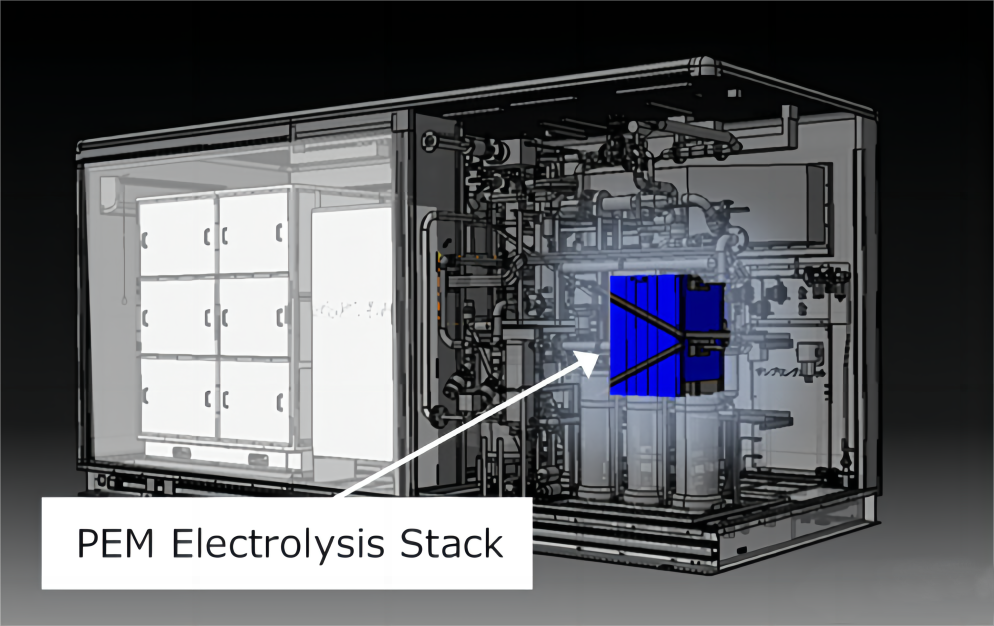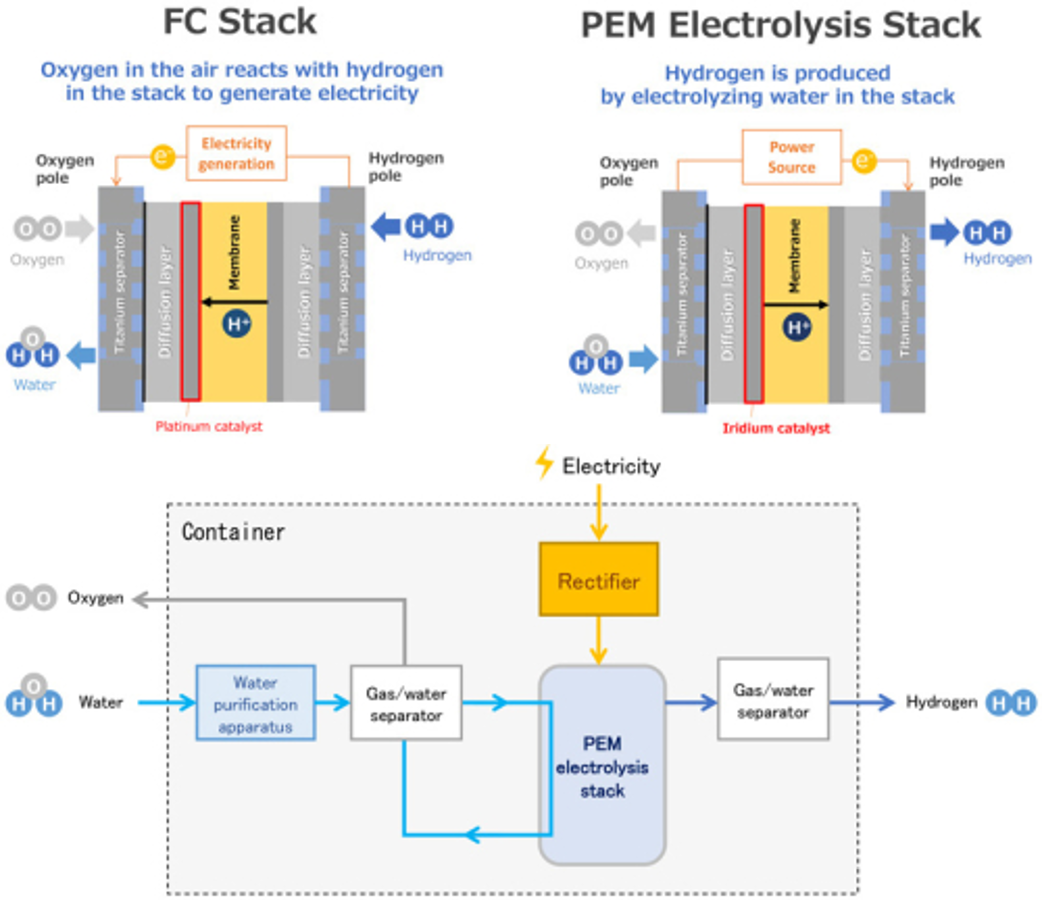Toyota Motor Corporation has announced that it will develop PEM electrolytic hydrogen production equipment in the field of hydrogen energy, which is based on fuel cell (FC) reactor and Mirai technology to produce hydrogen electrolytically from water. It is understood that the device will be put into use in March at a DENSO Fukushima plant, which will serve as an implementation site for the technology to facilitate its widespread use in the future.

More than 90% of the production facilities for fuel cell reactor components in hydrogen vehicles can be used for the PEM electrolytic reactor production process. Toyota has used the technology it has cultivated over the years during the development of the FCEV, as well as the knowledge and experience it has accumulated from a variety of use environments around the world, to significantly shorten the development cycle and allow for mass production. According to the report, the plant installed in Fukushima DENSO can produce about 8 kilograms of hydrogen per hour, with a requirement of 53 kWh per kilogram of hydrogen.

The mass-produced hydrogen fuel cell vehicle has sold more than 20,000 units worldwide since its launch in 2014. It is equipped with a fuel cell stack that allows hydrogen and oxygen to chemically react to generate electricity, and drives the car with electric motors. It uses clean energy. "It breathes air, adds hydrogen, and emits only water," so it is hailed as the "ultimate environmentally-friendly car" with zero emissions.
The PEM cell is highly reliable based on data from components used in 7 million cell fuel cell vehicles (enough for about 20,000 FCEVs) since the release of the first generation Mirai, according to the report. Starting with the first Mirai, Toyota has been using titanium as a fuel cell pack separator for hydrogen powered vehicles. Based on the high corrosion resistance and durability of titanium, the application can maintain nearly the same performance level after 80,000 hours of operation in PEM electrolyzer, which is fully safe for long-term use.

Toyota said that more than 90% of the FCEV fuel cell reactor components and fuel cell reactor production facilities in PEM can be used or shared, and that the technology, knowledge and experience Toyota has accumulated over the years in developing FCEVs has greatly shortened the development cycle, helping Toyota achieve mass production and lower cost levels.
It is worth mentioning that the second generation of MIRAI was launched at the Beijing 2022 Winter Olympic and Paralympic Games. It is the first time that the Mirai has been put into large-scale use in China as an event service vehicle, and its environmental experience and safety are highly praised.
At the end of February this year, the Nansha Hydrogen Run public travel service project, jointly conducted by Nansha District Government of Guangzhou and Guangqi Toyota Motor Co., Ltd. was officially launched, introducing hydrogen-powered car travel to China by introducing the second-generation MIRAI hydrogen fuel cell sedan, the "ultimate environmentally-friendly car". The launch of the Spratly Hydrogen Run is the second generation of MIRAI to provide services to the public on a larger scale after the Winter Olympics.
So far, Toyota has focused on hydrogen energy in fuel cell vehicles, fuel cell stationary generators, plant production and other applications. In the future, in addition to developing electrolytic equipment, Toyota hopes to expand its options in Thailand for producing hydrogen from biogas produced from livestock waste.
Post time: Mar-16-2023
